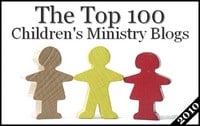visual teaching
It is my privilege to share my ONLINE Gospel Magic Lecture: “Magic, Mystery and Message” for the Fellowship of Christian Magicians Live Online Convention – Saturday, April 4, 2020
Here are some of the resources mentioned during lecture:
“Magic, Mystery and Message”
It is my privilege to share my Breakout Sessions: “Tricky Messages for Kids” and “Effective Response Times in KidMin” at the AG KidMin Conference 2020.
Here are some of the resources mentioned during the break-outs:
“Tricky Messages for Kids”
Tricky Messages Breakout Notes 2020
Jamie’s Online Bookstore… look for the “Tricky Messages for Kids” Books 1, 2, 3, 4 in pdf format
Links to Additional Resources:
GospelMagic.com (Aka: Doc Haley Gospel Magic)
Fellowship of Christian Magicians
Study Children’s Ministry with Jamie at River City Leadership College and get your degree!
“Effective Response Times in KidMin”
Jamie’s Online Bookstore… look for the Altar Call book available as a .pdf or paperback
Sample Salvation Email for Parents
Follow-up Pamphlets (AGKidMin):
Now What? Baptism in the Holy Spirit
Background Music:
Making Room For Response (old audio session via Jamie Doyle)
“Power-Filled” Book by Philip and Robin Malcolm (plus many other downloadable resources)
Study Children’s Ministry with Jamie at River City Leadership College and get your degree!
Have you ever wished you had that one new THING, believing it would improve your presentation?
Don’t fall for it! We all love new gadgets, props and things that can be used in a presentation, performance or ministry setting. Try these ideas first and let me know how it goes:
- Pray beforehand.
- Study so you’ll know what you’re talking about.
- Have a plan —When you don’t, they do.
- Meet the audiences’ level of intensity… and then, go beyond it.
- Be animated with your body movements: fill the space around you.
- Be animated with your voice: pace, volume, intensity, tone.
- Make eye-contact.
- Get kids to respond verbally: cheering, sound effects, call and response.
- Get kids to respond physically: standing, sitting, hand motions, moving around the room.
- Use kid-volunteers to help you: to hold props, become instant actors/actresses, to be interviewed.
- Use the names of the children present in the room while presenting.
- Use audio: background music, sound effects, popular song segments.
- Use lighting: adjust the brightness and color.
- Demonstrate a talent, ability or skill that fits the presentation.
- Prearrange for guests (kids, teens and adults) with special talents to be part of the presentation.
- Teach like Jesus (like one who has authority).
What other tips would you add?
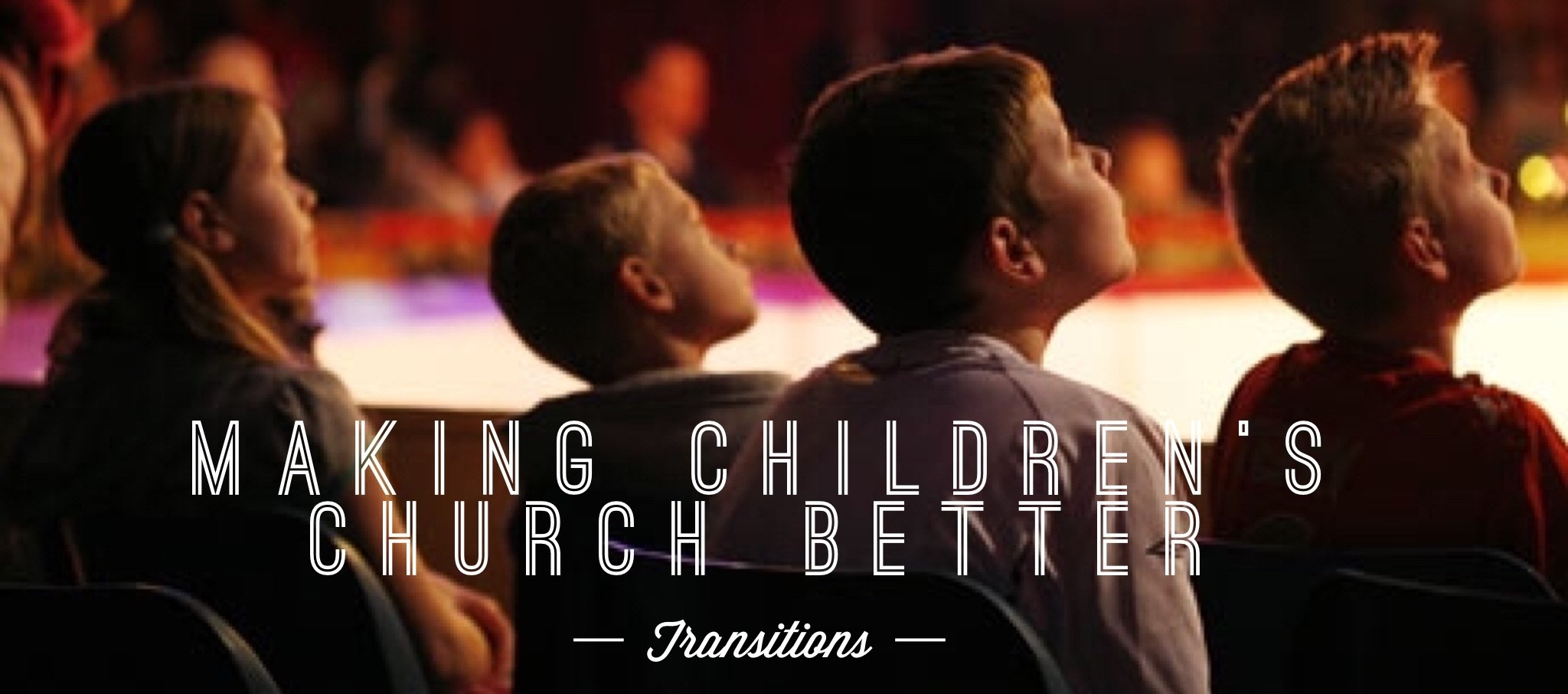 I still believe that one of the best ways to minister to children is with the “Children’s Church” model.
I still believe that one of the best ways to minister to children is with the “Children’s Church” model.
Call it “Children’s Church”, “Kids Church”, “Junior Church”, “Large Group Time,” etc. Whatever it’s called, it’s important to promote unity through corporate worship and teaching.
During this series on Making Your Children’s Church Better, we will explore the little details that make a huge impact. Today, we’re talking “Transitions”. In the last 7 months, our family has had the privilege of traveling the United States and observe the services for children in churches and at Kids Camps. We’ve seen the good the bad and the ugly when it comes to service planning and presentation… and the transitions stood out the most. So, here are few of my thoughts, tips, ideas and advice for keeping your Children’s Services moving along smoothly:
Know what you’re going to say before you start speaking
- Have a transitional statement and make it intentional: Don’t start your statement with: “Alright…”, “OK…” and “Well…” These are so common and it makes you sound like you’re unsure about what to say.
- Consider a “grabber statement” as your first line: “Something REALLY embarrassing happened to me the other day…”; “When I was a kid…”; “I’m bringing my teddy-bear next week! So should you for our pajama day!”
- Ask the kids a question that you’re confident they will answer: “Does anyone here like candy? I thought so – I’m going to give some away…”; “Don’t you wish you had more money?”
- Get kids to respond by doing something rather than just raising their hands: “If you’re excited to be here shout ‘Oh Yeah!”; “When I count 3-2-1, Jump out of your chair and give me a big cheer!”; “Give someone next to you a high 5!”; “Knock-knock…I said: Knock-knock…”
- Affirming statements will surprise your audience: “WOW…The kids in this room are pretty awesome.”; “Good morning, I’m so happy that you’re here!”: “I love getting to be with you – You kids are great!”
- Get the group to mimic you: Clap your hands in a pattern and point to the kids. Keep doing it until everyone is doing it. Start chanting something that has to do with your segment: “Kids Camp is almost here… Kids Camp is almost here… Kids Camp is almost here…” Motion to the kids to start chanting with you – getting louder and louder as you go.
Music Transitions help to set a mood.
I love Music – it’s powerful and can be so useful in ministry. But like anything, it’s a tool that should enhance the message or segments that have already be prepared. Background music can be found in a variety of places. I personally don’t like using music with recorded lyrics as background music when teaching – I feel that it will detract from what’s being talked about. I also don’t like altar music that is popular worship music if I’m talking over the top – again, it can be distracting. I don’t mind using worship music with lyrics while children are praying during a prolonged prayer time.
I highly recommend the background music produced by Brian Dollar and High Voltage Kids, music by friend and mentor Randy Christensen and music by Gospel Magic/Music Producer, Arthur Stead.
Here’s how I use a background music for transitions and segments:
- For Segments: I prefer to use music to create a mood during a segment When the assigned person begins talking the background music chosen fades in just loud enough to be heard but not overpowering.
- For Characters: Music that’s used for characters is typically used to introduce the character with a few seconds of the music playing on the front end and to dismiss the character as they leave with a few seconds of music continuing and then fading away once they leave. When the main teacher begins to interact with the character, the music fades down to a very low level. In some cases the music might change to reflect the character’s dilemma or interaction. In other cases, the music might fade away altogether.
- For Teaching (gospel magic routines and object lessons): The music starts immediately as the main teach begins talking.
- For the Main Illustration: The music begins immediately as the main teacher begins talking.
Video Transitions help to set a mood.
Kids live in a visual, digital age and using visuals is so important. There are many ways to use video clips as teaching tools, but this post is specifically about transitions. Again, I highly recommend the background music produced by Brian Dollar and High Voltage Kids.
- For Segments: As I am finishing my segment, the media team already knows my final statement. as soon as I say the final word in my final statement, they know to start the video. The video plays for a 3-5 second duration when the next person begins talking. As that person begins talking the video fades away and just a screen shot of the video remains on the screen.
- For Characters: I do create intro animated and static videos (videos in which there is no movement on the screen, just an image that relates to the character) with music in the background to help introduce the character. again the music-video is typically used to introduce the character with a few seconds of the music playing on the front end and to dismiss the character as they leave with a few seconds of music continuing and then fading away once they leave. When the main teacher begins to interact with the character, the music fades down to a very low level. In some cases the music might change to reflect the character’s dilemma or interaction. In other cases, the music might fade away altogether.
- For the Main Illustration: I believe a good “bumper” video can be a great way to transition into your main message. A “bumper” video is similar as a transition video used for various segments, but it’s customized with the title of your series and/or the title of the message. It’s only 10-20 seconds with music and video footage or animation that relates to your topic. Many curriculum companies include “bumper” videos for Large-group times. A “bumper” video can be easily created with the modern video editing software as well as creating animated slides in PowerPoint and Keynote that can be exported as digital video files. Perhaps I will demonstrate how I use Keynote to accomplish this in a later post.
A few More Thoughts
- Timing is Crucial from Segment to Segment: In other words, if there is a leader on the stage presenting the announcements and I am the next person who is supposed to present the offering. I don’t want to be hanging out in the back of the room waiting for the person on stage to finish and motion to me or have to introduce me so I know when to start making my way up to the stage… thus leaving an awkward moment of silence or an awkward moment of the leader having to figure out what to say while I’m meandering my way to the stage. Instead, I want to know the list of announcements… and their order… and what the previous leader’s final statement will be. As the final announcement is starting, I make my way to the front. During the final statement, I start to walk on stage so I can begin my segment.
- Stop Introducing the Next Person: Unless they are a guest-speaker or someone who is not known to the kids. Otherwise, use the methods already listed to make the transitions smoother.
- Have a Microphone in your Hand or on your Ear: That way, when your segment starts, you’re not speed-walking to the opposite side of the stage to get it. Or, your not aimlessly searching around and asking,”What Mic do I use?” BTW: make sure it’s been tested and is functioning properly.
- Props or Visuals In Place and Ready: If your segment begins with you walking on stage and picking up a prop, hand-out example, offering bucket or other visual — double-check that its in it’s place and ready to be used.
- Get Everyone On the Same Page: Do meet with all presenters and the media team so everyone knows how to handle the transitions. It might be necessary to have a walk-thru rehearsal where media cues are practiced and opening and final statements are practiced. I suggest using PlanningCenterOnline.com to plan your services that will include the lengths for segments and transitional/media cues. There is a free version that can get you started.
You can find even more videos at WorshipHouseKids.com
If you’re like me (and I know I am), you put a lot of emphasis on teaching kids the Word of God every week – and in some cases, several times or venues a week. For me, I have 4 Kids’ Church large groups on a weekend (one on Saturday Night, 2 on our main campus and I travel between those 2 services to teach/preach at our second campus most weeks) Add to that a Sunday School hour, Wednesday night large groups (of which I’m involved) and Wednesday night small groups. We also have a myriad of classes and services for toddlers and preschoolers and even some teaching time for infants that our wonderful staff on directors and volunteers oversee and participate in.
THERE’S A WHOLE LOT OF TEACHING GOING ON!
That’s why I’ve started a simple “training by e-mail” campaign for our lead teaching staff. Each week I will send out an e-mail to our teaching staff with an encouragement and a tip that just might help them reach new heights. I would like to share those e-mails with you in blog-format each week… if you follow me on twitter, you saw that I did a series of around 15 tips for teaching in kidmin a few weeks ago – these coming blog posts are those tweets elaborated. So, here we go:
Let me encourage you this week as you plan for the upcoming Wednesday or Weekend and give you a pointer that I just know will give you the confidence and in some cases the “know-how”… and if there’s anything I’ve learned in the last few years: INFORMATION is POWERFUL when you APPLY IT.
THIS WEEKS TIP:
 Start preparing early in the week for the upcoming lesson or class time. In other words, if your ministry time was over the weekend, crack open that lesson book or materials on Monday… if your ministry time was on Wednesday; then make Thursday your day to start studying. You don’t have to plan your entire lesson on that day, but at least:
Start preparing early in the week for the upcoming lesson or class time. In other words, if your ministry time was over the weekend, crack open that lesson book or materials on Monday… if your ministry time was on Wednesday; then make Thursday your day to start studying. You don’t have to plan your entire lesson on that day, but at least:
- Read over the lesson
- Know and memorize the key verse
- Look up and read any supporting verses
- And know the main point of the lesson.
Why should you do this? I’m glad you asked!
…When you start early in the week, it gives the Holy Spirit time to be your helper… instead of (gulp) having to work in spite of you. Think about it: all week long as you pray over the materials you’ve read, the Lord will reveal unique teaching ideas, stories you’ve heard or events in your life that you could work into your lesson. As the day of ministry gets closer and you are planning what that class time should look like, instead of saying, “Lord, what am I going to teach?” …you’ll be able to say “Lord, how do I fit all of these ideas into the lesson?”
Try it – I promise it will work. And as always, if you ever need a teaching idea, I’m just an e-mail away and I’m happy to brainstorm with you! I’d better let you go – some of you need to start studying!
Be blessed,
Jamie
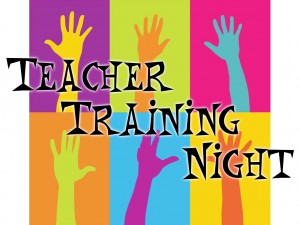 Last night we held our teacher training night (we do this once every 2 months) we come together and I endeavor to teach on 1-2 topics that could help a teacher be better equipped in his/her classroom or service. Last night, I focused on discipline in the classroom and some practical teaching tips. For my session on discipline, I decided to get another “specialist’s” thoughts and perspective. The one and only Joe McAlpine Skyped in and presented about a 20 minute talk on discipline in KidMin settings. Our team of 28 loved it! (We even got treated to an extra special guest, David, Joe’s 4 year old son made a sudden appearance – spider-man hat and all!) I appreciated Joe’s willingness to give up some time and give his thoughts and perspective.
Last night we held our teacher training night (we do this once every 2 months) we come together and I endeavor to teach on 1-2 topics that could help a teacher be better equipped in his/her classroom or service. Last night, I focused on discipline in the classroom and some practical teaching tips. For my session on discipline, I decided to get another “specialist’s” thoughts and perspective. The one and only Joe McAlpine Skyped in and presented about a 20 minute talk on discipline in KidMin settings. Our team of 28 loved it! (We even got treated to an extra special guest, David, Joe’s 4 year old son made a sudden appearance – spider-man hat and all!) I appreciated Joe’s willingness to give up some time and give his thoughts and perspective.
Now less then a year ago, Joe (who teamed up with Terry Cuthbertson) hosted a conference in which they had me Skype in for a session (which I was honored to do)
Most of what Joe talked about were things that I could have said. But, there’s just something about bringing in a guest who is perceived as a “specialist” The percepting is funny: “This guy is from the other side of the country, he obviously knows what he’s talking about…”
I also think it’s just a good idea to bring in a new face and a different voice from time to time. So, here’s what I got to thinking: I’m willing to give up a few minutes once in a while to help a fellow KidMin pastor/leader with a training session via Skype. And I’m guessing some of you are too. I mean, it’s not difficult to set up and your team will feel like they are getting a “specialist’s” perspective. Start a pool of KidMin Leaders in your network of friends that are willing to give up a few minutes once in a while to Skype in (iChat/Tokbox/etc) to KidMin Training times.
 Fine Tune Your Ability to Create the Experiences
Fine Tune Your Ability to Create the Experiences
Whether you choose to use Gospel Magic or not, there are some things you should be doing in any creative presentation method that will help you to create an experience with your class or audience:
Self Evaluation
As you tweak your routines or put the finishing touches on a prop; ask yourself:
- How am I creating an experience for my audience?
- What else can I do to add that little extra ‘whoa’ in the moments that I’m with them?
- What will these kids talk about when they leave?
- What am I doing to advance my skills as a performer/presenter and ‘experience creator’ so my program stands out? And not just from others… but, from the last ‘experience’?
Be Willing To Face Evaluation From Others
These are vital questions – and they need to be answered if you plan on succeeding as a performer/presenter. No question about it, you’re going to have to subject yourself to criticism and evaluation. Find a coach or several coaches whom you will allow to freely comment on your presentation. Record yourself on video and invite those who are already successful in the realm of children’s ministry presentation to view your presentation(s)… they can help you. Invite also, those who are trained and seasoned in drama and theater to view your presentations and get their insight.
You Have The Potential To Be Amazing
If you love what you do… kids will love you, you will feel very fulfilled at what you’re doing. Put that all together and you’ll be at your best as a presenter. And when you’re at your best – it will show up in your presentations- therefore, it will help you to create a stronger experience.
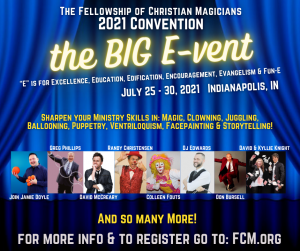
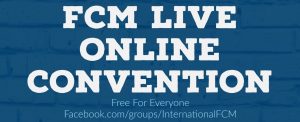


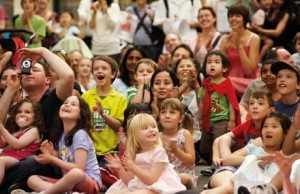 Over the years I have certainly heard the argument that Gospel Magic is of the devil…
Over the years I have certainly heard the argument that Gospel Magic is of the devil…

